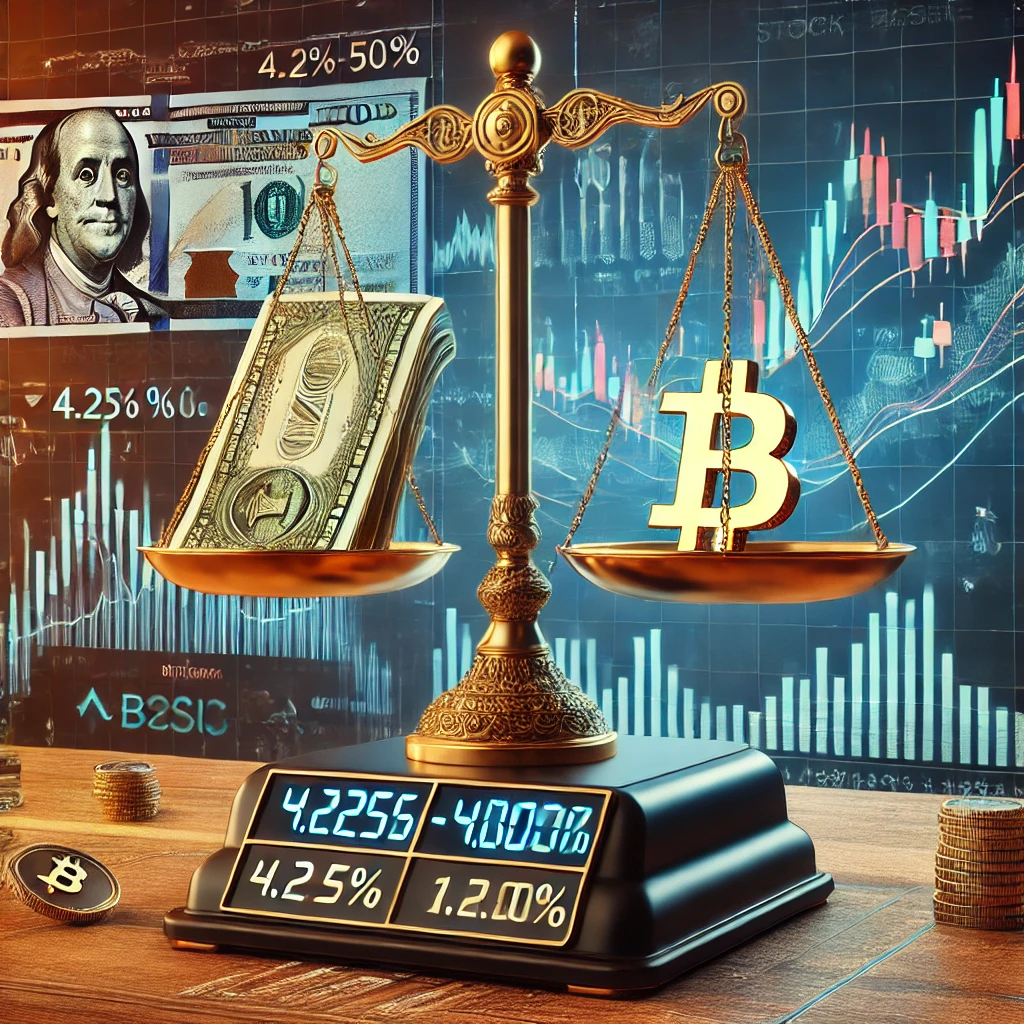Fed Keeps Interest Rates Unchanged in March, Markets Eye Powell’s Remarks
The Federal Reserve has opted to hold interest rates steady for the second consecutive meeting, maintaining its federal funds rate between 4.25% and 4.50%. This decision aligns with market expectations as concerns over inflation, trade policies, and recession risks mount.
Federal Reserve Maintains Rate Policy Amid Economic Uncertainty
As widely anticipated, the Federal Reserve has left interest rates unchanged in its March meeting, keeping the federal funds rate in the 4.25%–4.50% range. According to the CME Group’s FedWatch Tool, there was a 99% probability of this outcome, reinforcing market confidence in the Fed’s cautious approach.
The central bank also revised its economic projections for 2025, lowering GDP growth estimates from 2.1% to 1.7% while increasing expectations for inflation and unemployment:
- Unemployment forecast: Raised from 4.3% to 4.4%
- PCE inflation forecast: Increased from 2.5% to 2.7%
- Core PCE inflation forecast: Adjusted from 2.5% to 2.8%
- Rate cuts projection: Two 50-basis-point cuts expected in 2025
In its Federal Open Market Committee (FOMC) statement, the Fed acknowledged that while the labor market remains resilient, inflationary pressures and global economic challenges persist. Chairman Jerome Powell has previously reiterated that the economy remains strong, signaling that policymakers are closely monitoring conditions before making any changes.
Market Awaits Powell’s Address on Trade Policies and Recession Risks
This meeting comes amid Trump administration trade policies that have introduced fresh economic concerns. The recent tariffs imposed on China, Mexico, and Canada were flagged by the Fed in January as a potential headwind, with economists warning they could reverse recent progress in lowering inflation.
Key inflation data suggests cooling price pressures—the consumer price index (CPI) rose 0.2% in February, lowering the annual rate from 3% to 2.8%. However, fears of higher consumer prices due to retaliatory tariffs persist.
Adding to market uncertainty, Treasury Secretary Scott Bessent recently acknowledged that he could not guarantee the U.S. would avoid a recession. President Trump himself, in a recent Fox News interview, did not rule out the possibility.
With Powell set to deliver remarks, markets are closely watching for guidance on monetary policy, inflation, and economic stability as the U.S. navigates these challenges.
Bitcoin’s Role in a Recession: BlackRock’s Take
As fears of an economic slowdown mount, Bitcoin’s role in financial markets is gaining renewed attention. BlackRock’s Global Head of Digital Assets, Robbie Mitchnick, suggested that a recession could fuel Bitcoin’s rise, citing increased liquidity and fiscal stimulus as potential catalysts.
“Bitcoin benefits from liquidity expansion, fiscal spending, and monetary easing—all of which intensify in a recession,” Mitchnick stated in an interview with Yahoo Finance.
Comparing Bitcoin to gold, he emphasized that while Bitcoin is fundamentally an uncorrelated asset, market sentiment often causes it to move in tandem with traditional assets in the short term. However, in the long run, Bitcoin’s decentralized and non-sovereign nature could position it as a hedge against macroeconomic instability.
Despite recent market volatility, Bitcoin remains up 15% since November, suggesting that institutional confidence in the asset remains intact.
Conclusion
With the Fed maintaining rates, all eyes are on Powell’s speech and the potential economic repercussions of ongoing trade policies. While recession fears loom, some analysts see an opportunity for Bitcoin to thrive in a shifting macroeconomic environment. Whether the crypto market aligns with traditional financial expectations or carves out a more independent trajectory remains a key question in the months ahead.
